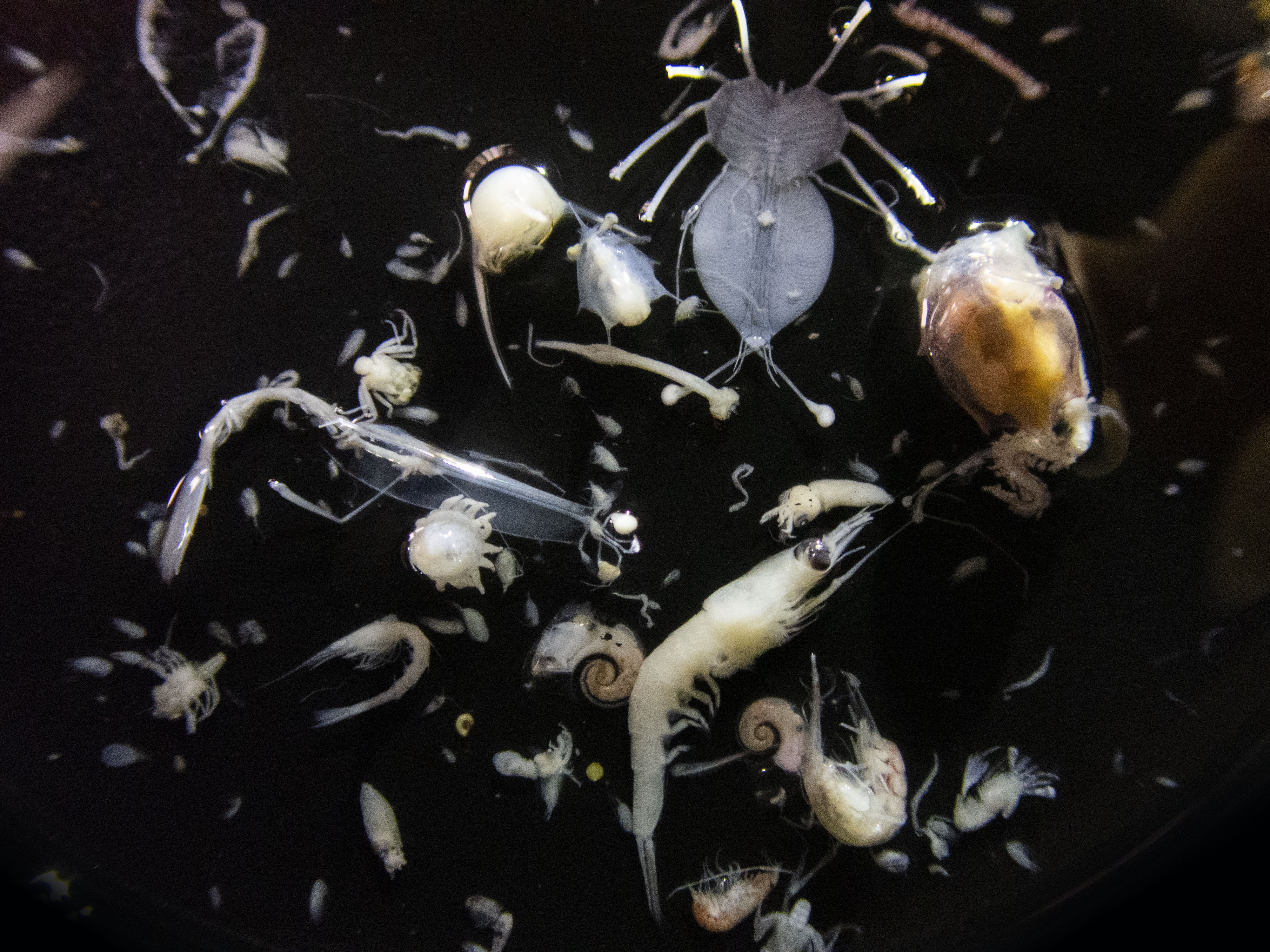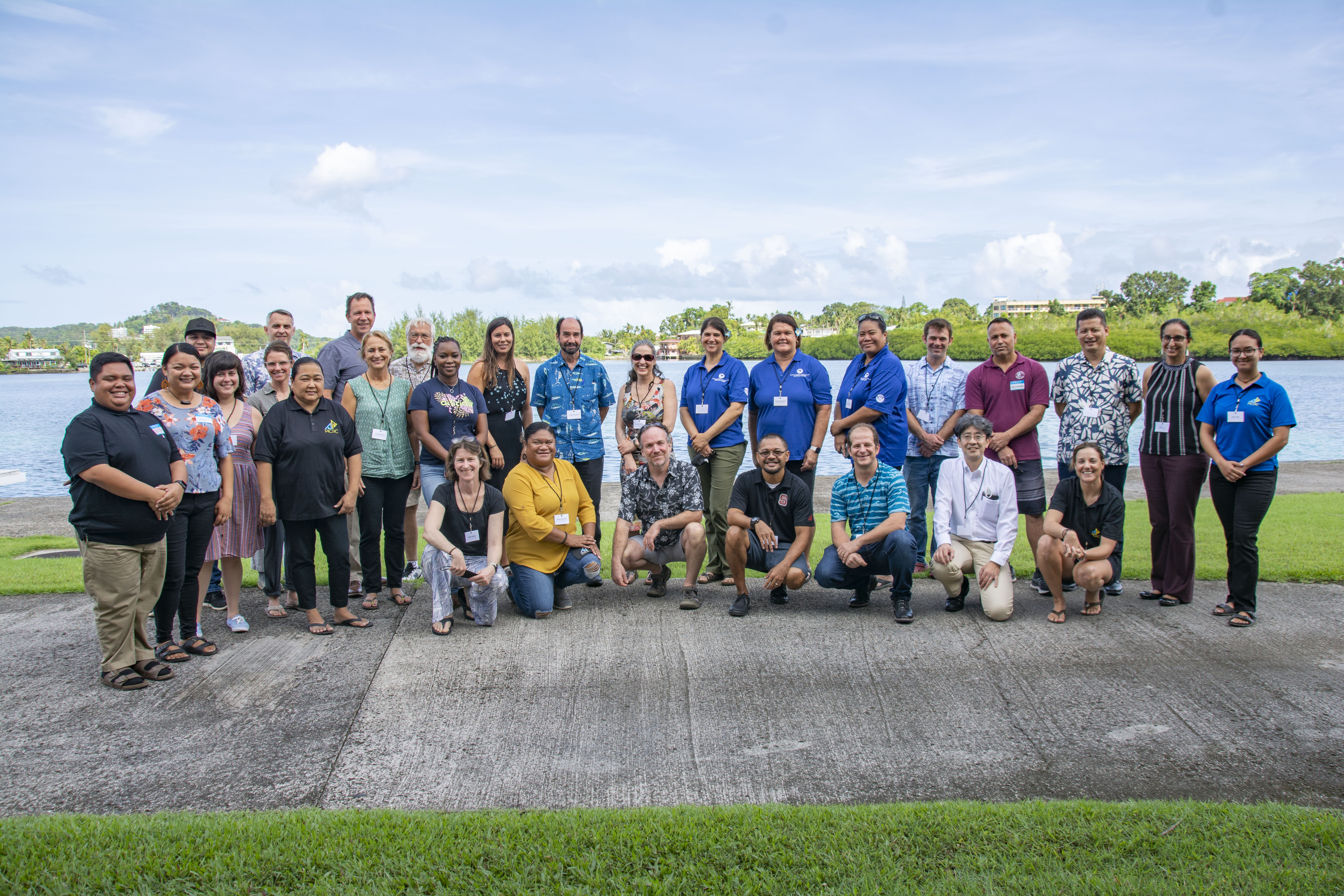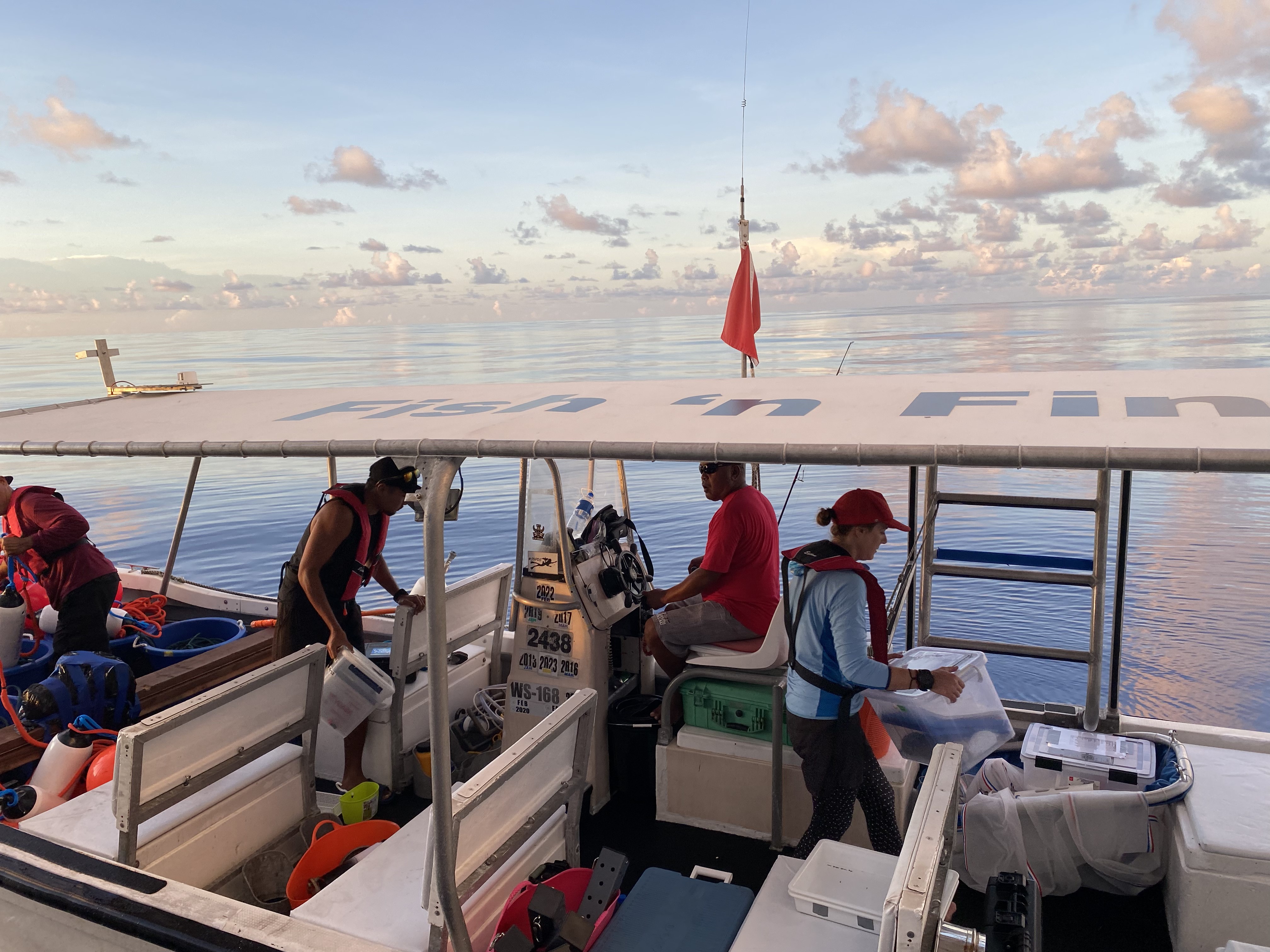One of the world’s largest offshore marine protected areas will focus on answering key scientific questions driven by the needs of Palau and the world.
New Strategy highlights the scientific priorities of the Palau National Marine Sanctuary
June 8, 2023

Plankton collected from the PNMS in October 2022.
In 2015, the Republic of Palau designated 80 percent of its Exclusive Economic Zone (EEZ) as a no-take marine protected area (MPA). Referred to in Palauan as Euotelel a Klingil a Debel Belau, the Palau National Marine Sanctuary (PNMS) is an offshore environment that begins 24 nautical miles from the islands.
It stretches across 475 077 km², an area larger than the U.S. state of California. The remaining 20 percent of the EEZ is designated a Domestic Fishing Zone. Based on the available data, the PNMS reaches depths of 8000m. But, as can be expected, large areas of the sanctuary are still unexplored. An estimated 794 vertebrate species can be found there, including economically important fishes, such as bigeye tuna and yellowfin tuna, and threatened species, like leatherback turtles and whale sharks. Clearly, it’s a nationally and globally important area with huge potential for scientific discovery.
Recently, the Palau International Coral Reef Center (PICRC), one of the organizations mandated with managing the PNMS, released the PNMS Science and Monitoring Strategy 2024 - 2034, outlining the next ten years of scientific research priorities in the area. This strategy was formed after significant discussions with both local experts, including those from the government, NGOs, and fishermen, and international experts from Stanford University, NOAA, the National Marine Sanctuary of American Samoa, Scripps Institute of Oceanography, University of Hawaii and many other institutions.

Attendees of the PNMS Science and Monitoring Strategy Development Workshop, which PICRC hosted in the week of December 5, 2022.
The strategy is unique in that we engaged with a large number of collaborators from across the world to hear a diverse range of recommendations and priorities,” stated King Sam, PNMS Program Manager. “After 10 years, we aim to have developed a science and monitoring program for the PNMS, like the one we already have for coastal areas. We’ll be doing the type of research needed to answer the important scientific questions for Palauans, and for the world.”
Part of the process of designing the strategy involved a Science and Monitoring Strategy Development Workshop, which PICRC hosted in the week of 5 December 2022. Experts from around the world were in attendance (mostly in person) with the objectives to review and refine the priorities by looking at the key research questions, to develop key scientific partnerships, and to identify collaborations and funding opportunities. The strategy then underwent months of review from both local and external partners to establish the key focuses.
The initial project focus will involve developing an understanding of the abundance and distributions of organisms, habitats, and ecosystems, through the use of conventional and novel methods like eDNA and baited remote underwater videos. Once a baseline has been established, other areas would be examined surrounding how effective the PNMS could be as a carbon sink and how it would contribute to Palau’s food security efforts. Another key opportunity is the development of a domestic market for pelagic fish species and the potential social and economic benefits that may be more accessible to the local community.
The PNMS also provides a good learning opportunity for managers of other large-scale marine reserves. The goal of long-term monitoring is to detect changes over time, but the size and remoteness of the PNMS makes this logistically difficult. Therefore, determining what is feasible and what can be achieved will provide valuable and transferable knowledge.

Researchers prepare for plankton tows in the PNMS, October 2022.
Finally, the strategy identified that socio-economic research is also needed to look at the social, cultural, economic and political aspects of the PNMS, as the PNMS was established for the long-term benefits of the people of Palau. A better understanding of the kinds of benefits derived from these large scale marine protected areas can only be achieved by increasing our body of knowledge for these spaces and the PNMS science & monitoring strategy is an important step in that direction.
“Offshore environments are out of sight, and therefore, often out of mind but Palau has taken huge steps to acknowledge how important this environment is,” said King Sam. “This strategy is part of our effort to protect this environment so that future generations can benefit from it.”
The convening of the key stakeholders and experts to develop the PNMS science & monitoring strategy was funded through the Global Environment Facility in collaboration with the United Nations Development Programme under the project, Strengthening the Palau National Marine Sanctuary for the Conservation and Management of Global Marine Biodiversity and Sustainable Fisheries.

 Locations
Locations



